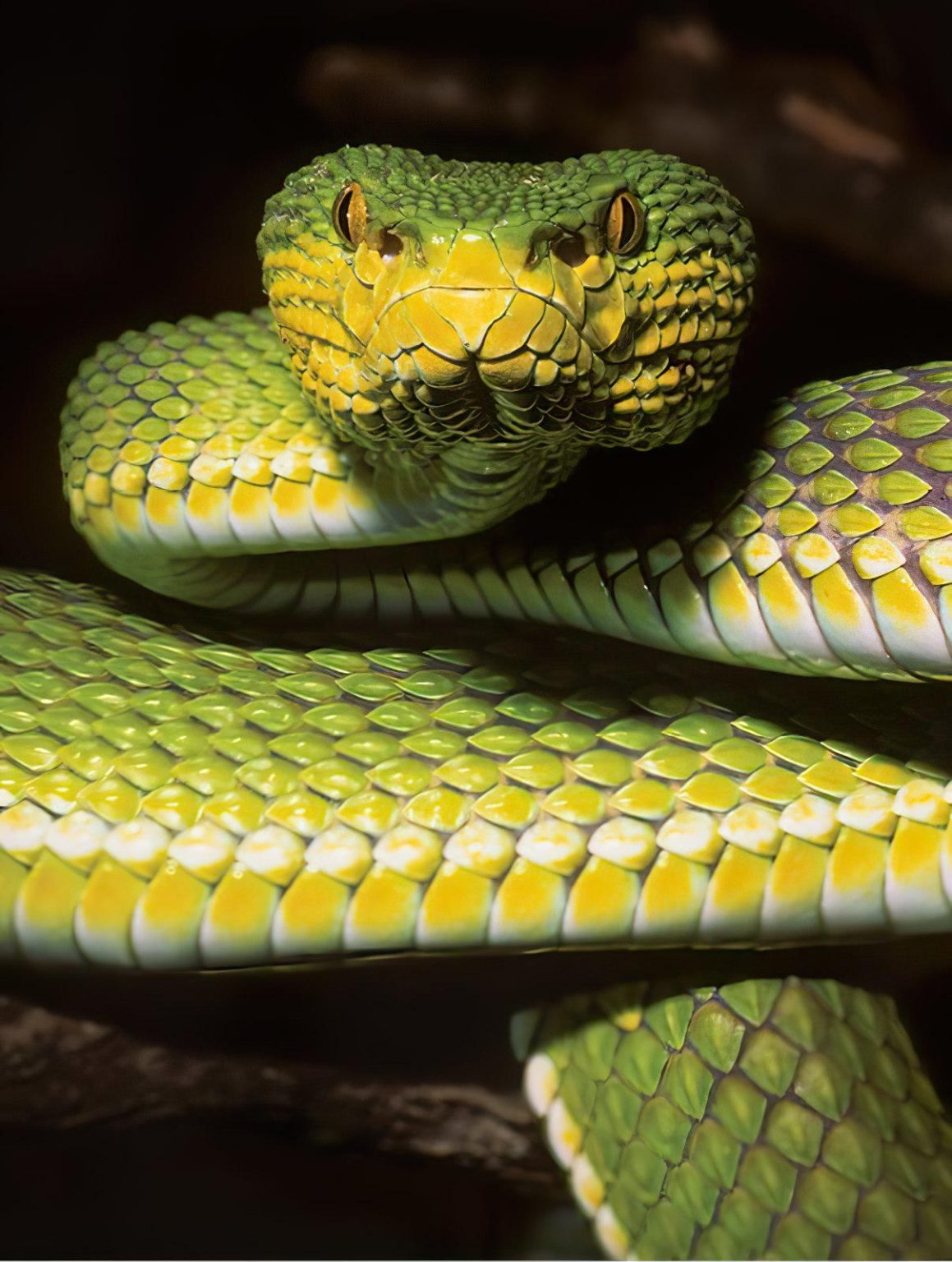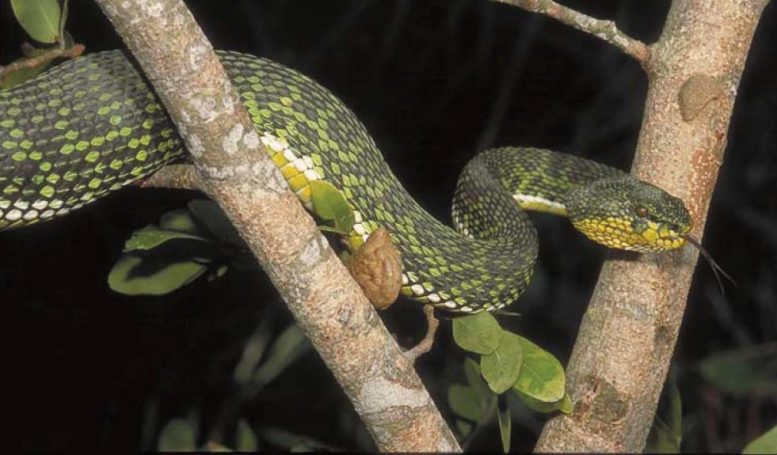
Posted on 06/18/2024 8:56:16 AM PDT by Red Badger

The Ayeyarwady pit viper, a new species discovered in Myanmar by Dr. Chan Kin Onn, illustrates the complexities of species differentiation in pit vipers. This species, which displays traits of both the redtail and mangrove pit vipers, was initially thought to be a hybrid but was confirmed as distinct through genomic analysis. Credit: Wolfgang Wüster
Finding and describing new species can be a tricky endeavor. Scientists typically look for distinctive characters that can differentiate one species from another. However, variation is a continuum that is not always easy to quantify. At one extreme, multiple species can look alike even though they are different species—these are known as cryptic species. At the other extreme, a single species can be highly variable, creating an illusion of being different species. But what happens when you encounter both extremes simultaneously?
Herpetologist Dr Chan Kin Onn (previously at the Lee Kong Chian Natural History Museum, Singapore, now with the University of Kansas Biodiversity Institute and Natural History Museum, USA) led a study describing a new species of pit viper from Myanmar that is both similar and different from its sister species. The discovery is published in the open-access journal ZooKeys.
Challenges in Differentiating Asian Pit Vipers “Asian pit vipers of the genus Trimeresurus are notoriously difficult to tell apart, because they run the gamut of morphological variation. Some groups contain multiple species that look alike, while others may look very different but are actually the same species,” they say.
The redtail pit viper (Trimeresurus erythrurus) occurs along the northern coast of Myanmar and is invariably green with no markings on its body. A different species called the mangrove pit viper (Trimeresurus purpureomaculatus) occurs in southern Myanmar. This species typically has distinct dorsal blotches, and incredibly variable dorsal coloration including gray, yellow, brown, and black, but never green. Interestingly, in central Myanmar, sandwiched between the distribution of the redtail pit viper and the mangrove pit viper, a unique population exists that is green with varying degrees of blotchiness, which appears to be a blend between the redtail pit viper and the mangrove pit viper.

A specimen of Trimeresurus ayeyarwadyensis from Meinmahla Kyun Wildlife Sanctuary, Pyapon District, Ayeyarwady Region in Myanmar. Credit: Hla tun
Initial Hypothesis and Genomic Revelation “This mysterious population in central Myanmar baffled us and we initially thought that it could be a hybrid population,” the researchers said. In a separate paper, Dr Chan used modern genomic techniques and determined that the population in central Myanmar was actually a distinct species and not a hybrid population.
But this was not the end of the story. The researchers discovered another surprise when they examined the snake’s morphological features: they found that the new species was also highly variable. Certain populations are dark green with distinct blotches, easily distinguishable from its closest relative, the redtail pit viper, which is bright green with no blotches. However, some populations of the new species are bright green with no blotches and look virtually identical to the redtail pit viper.
“This is an interesting phenomenon, where one species is simultaneously similar and different from its closest relative (the redtail pit viper). We think that at some point in the past, the new species may have exchanged genes with the redtail pit viper from the north and the mangrove pit viper from the south,” says Dr Chan.
The new species is called the Ayeyarwady pit viper (Trimeresurus ayeyarwadyensis) in reference to the Ayeyarwady River, which is the largest and one of the most important rivers in Myanmar. The river forms an expansive delta that is bounded by the Pathein River to the west and the Yangon River to the east. These rivers and their associated basins also mark the westernmost and easternmost distribution boundaries of the Ayeyarwady pit viper.
References:
“A new species of pit-viper from the Ayeyarwady and Yangon regions in Myanmar (Viperidae, Trimeresurus)” by Kin Onn Chan, Shahrul Anuar, Ananthanarayanan Sankar, Ingg Thong Law, Ing Sind Law, Rasu Shivaram, Ching Christian, Daniel G. Mulcahy and Anita Malhotra, 13 December 2023, ZooKeys.
DOI: 10.3897/zookeys.1186.110422
“The Artefactual Branch Effect and Phylogenetic Conflict: Species Delimitation with Gene Flow in Mangrove Pit Vipers (Trimeresurus purpureomaculatus-erythrurus Complex)” by Kin Onn Chan, Daniel G Mulcahy and Shahrul Anuar, 21 July 2023, Systematic Biology.
DOI: 10.1093/sysbio/syad043

Seems like a friendly snake.
New snek species ping.
Bidenus Democratus
Long time rumor Carville is a hybrid. Resemblance is increasing as he gets older.
Is it poisonous or are all pit vipers poisonous?
I’m betting a Honey Badger could take care of it, new or not.
ALL........................
Honey Badger don’t give a s.................
I’m surprised they can still use the term “sister species.”
Looks like a Mamushi, venomous pit viper found in Japan.
But bigger.
As long as it’s not referring to “ghettopotamuses”, it’s OK.
As long as we have Mitch McConnell, we don’t need another poisonous ambush predator, thanks.
Should we be concerned about the number of scientists that are baffled lately?
Most snakes are Venomous. I think with the exception of the garter snake wich is poisonous.
All, but with different levels of venom toxicity.
Rattlesnakes are one of the best-known groups of pit vipers.
Constrictors have no venom.
The majority of snake species (about 85 percent) do not produce venom.
Sorry. It will always be Burma to me. ;)
That is one gorgeous snake - and I’m right up there with Indiana Jones and my fear of snakes!
Disclaimer: Opinions posted on Free Republic are those of the individual posters and do not necessarily represent the opinion of Free Republic or its management. All materials posted herein are protected by copyright law and the exemption for fair use of copyrighted works.